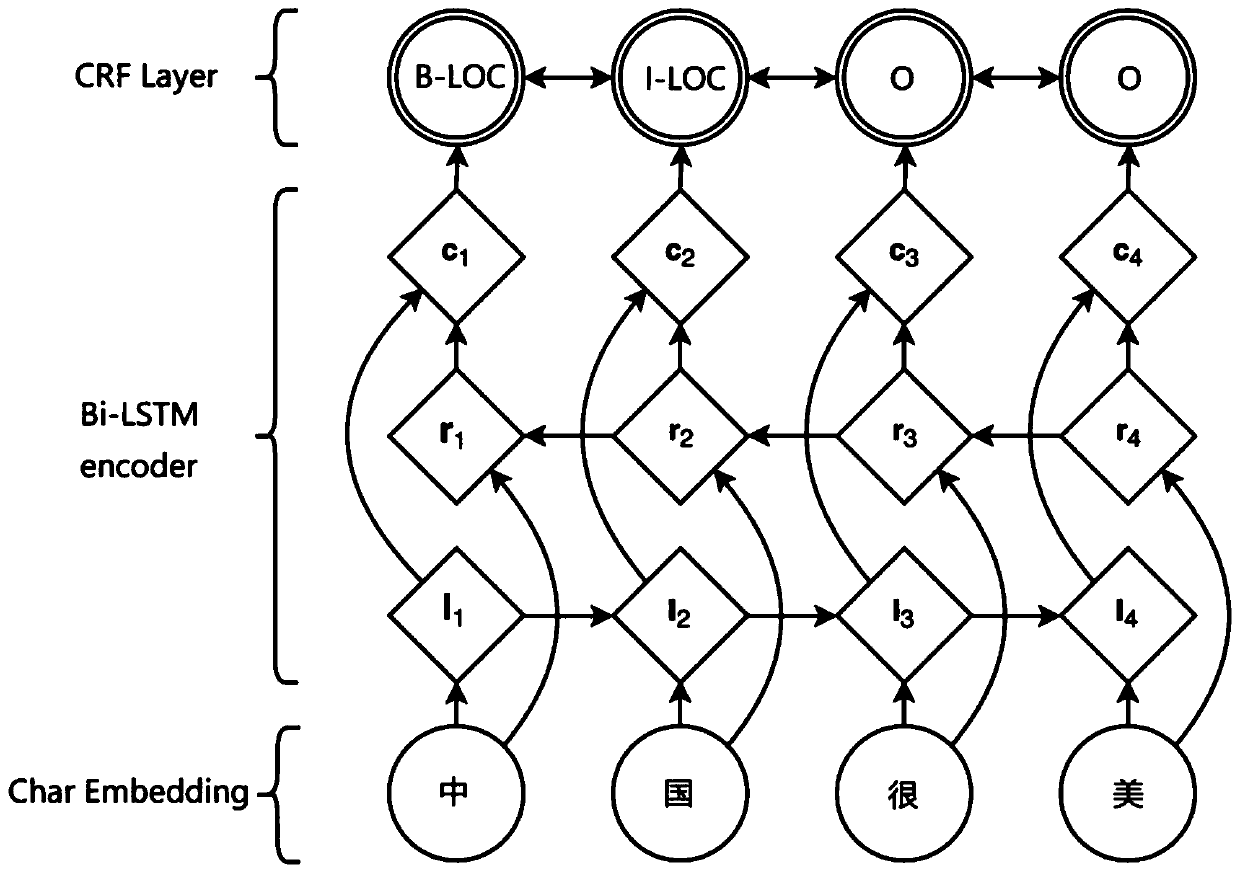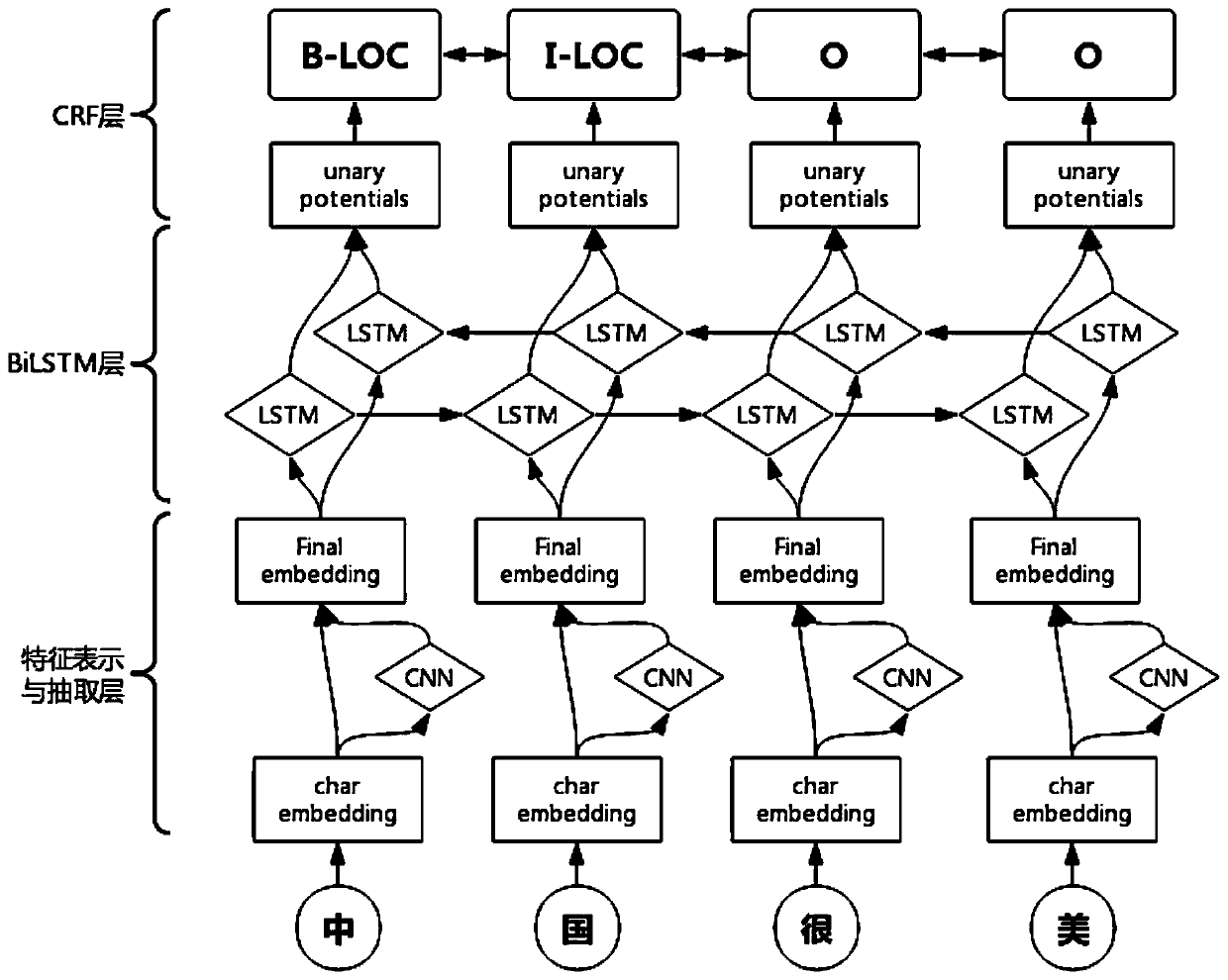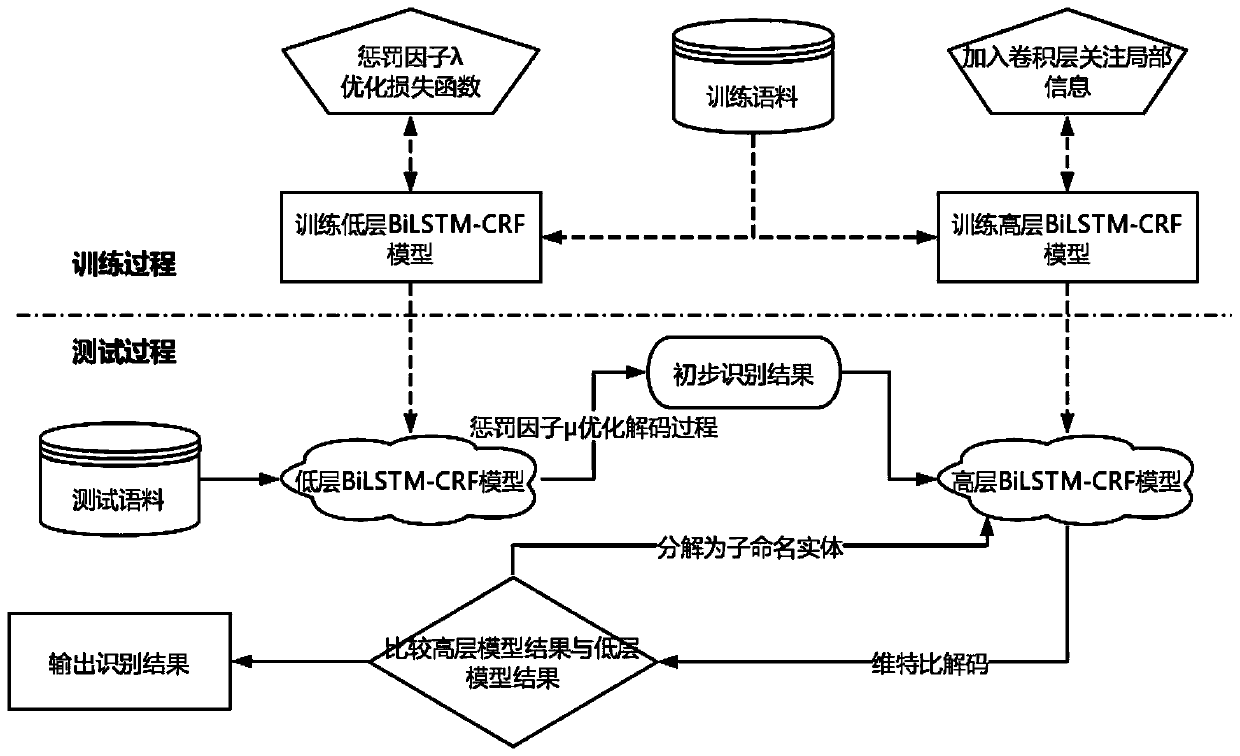Named entity recognition method based on cascading model
A technology for named entity recognition and named entities, which is applied in neural learning methods, biological neural network models, special data processing applications, etc., can solve complex Chinese named entity recognition and other problems, and achieve reliable classification, improved success rate, and accurate grasp Effect
- Summary
- Abstract
- Description
- Claims
- Application Information
AI Technical Summary
Problems solved by technology
Method used
Image
Examples
Embodiment Construction
[0016] as attached figure 1 As shown, the BiLSTM-CRF named entity model structure consists of a distributed embedding layer, a deep neural network layer and a conditional random field layer. The distributed embedding module uses word2vec to train word vectors. This method associates the distributed representation of text with the meaning between words, eliminating the phenomenon of word gaps. Using pre-trained word vectors as the input of deep learning to deal with natural language problems has become a classic and mature method. Many works have shown that using pre-trained word vectors compared with random embeddings, the entire neural network converges faster; the trained model has a greater improvement in accuracy and recall; especially in small data The advantages of using word2vec are more obvious in this case.
[0017] For information sequences, the information has complex temporal correlation with each other, and more importantly, for named entity recognition tasks, ...
PUM
 Login to View More
Login to View More Abstract
Description
Claims
Application Information
 Login to View More
Login to View More - R&D
- Intellectual Property
- Life Sciences
- Materials
- Tech Scout
- Unparalleled Data Quality
- Higher Quality Content
- 60% Fewer Hallucinations
Browse by: Latest US Patents, China's latest patents, Technical Efficacy Thesaurus, Application Domain, Technology Topic, Popular Technical Reports.
© 2025 PatSnap. All rights reserved.Legal|Privacy policy|Modern Slavery Act Transparency Statement|Sitemap|About US| Contact US: help@patsnap.com



